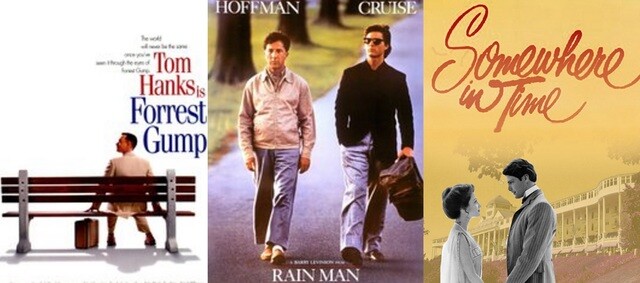Editor's Note: Some of the films referenced in this article contain strong language and adult content. LDS Living is reporting on true stories from the lives of Latter-day Saints, not suggesting that you should watch all of the movies on this list.
Here are just 15 examples of Latter-day Saints who lived lives that were so inspiring, they were turned into full-length films.
Foxcatcher
Nominated for three Golden Globes (Best Movie, Best Actor, Best Supporting Actor) and five Academy Awards (Best Actor, Best Supporting Actor, Best Director, Best Screenplay, Best Hair and Makeup), not many would have guessed the critically acclaimed (and R-rated) 2014 film Foxcatcher has close ties to an Latter-day Saint Olympian and convert.
But the movie captures one of the most tragic moments in Latter-day Saint Mark Schultz's life.
Growing up, Schultz was an all-around athlete, setting 20 school records. In his junior year, Schultz followed in his big brother Dave's footsteps, taking up wrestling.
In college, Dave and Mark teamed up together to train which greatly improved Mark's skill, allowing him to win three NCAA Championships. The Schultz brothers became the most-winning brother combination in American history when it came to NCAA, US Open, World, and Olympic titles. They also became the only American brothers to win World Championship and Olympic gold medals.
Dave won the 1983 World Championship and brought home an Olympic gold medal for the 1984 Games. Mark won his Olympic gold the same year, 1984, and the World Championships in 1985 and 1987. He retired from wrestling after placing sixth in the 1988 Olympic Games.
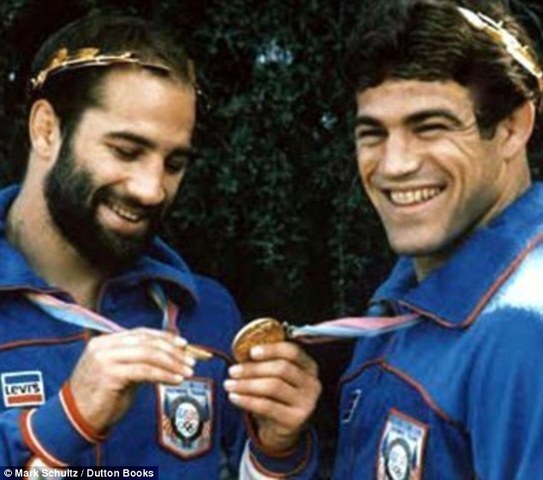
Just 17 months apart, Mark and Dave were nearly inseparable. “Their family life wasn’t perfect, so they really bonded,” Dave's wife, Nancy, told The Guardian. “They were so close, they were never separated. . . . They were never more than 20 feet apart.”
► You'll also like: 6 famous Olympians who joined the Church
In the 1980s, Mark was short on money. He'd just lost a job as an assistant wrestling coach at Standford and USA Wrestling didn't pay its athletes. So when a multimillionaire, John du Pont, approached Mark to join a wrestling program at Villanova University that would pay $24,000 a year and give Mark a home on du Pont's 800-acre Foxcatcher estate, Mark took the job. Later Dave joined his brother at Foxcatcher, despite du Pont's sometimes violent outbursts and threats.
Eventually, Mark left Foxcatcher, leaving Dave there with his wife, and in 1991, he began working as BYU's assistant wrestling coach where he was converted and became a member of the Church.
Tragically, while training for a second Olympic bid in 1996, Dave Schultz was shot three times by John du Pont in his home at Foxcatcher Farm, dying in his wife's arms. Mark had suddenly lost “his best friend . . . and life-support system," Nancy Schultz told The Guardian.
It was only with the help of his Latter-day Saint faith that Mark was able to overcome the hatred and anger that built inside him after his brother's murder. “My anger over time has turned to pity and my pity has turned into compassion for John,” he says. “I feel like I’ve gotten to understand him better, as odd as that sounds about a man who murdered my brother. I can forgive him,” he told The Guardian.
At the time, Mark was the head coach of Brigham Young University's wrestling team. And just four months after Dave's death, Mark competed in the Ultimate Fighting Competition IX, winning $50,000 and the competition.
The emotional and exciting details of Mark Schultz's life caught the attention of Director Bennett Miller, who captured it in the film Foxcatcher, starring Channing Tatum as Mark Schultz, Mark Ruffalo as Dave, and Steve Carell as John E. Du Pont.
Love, Kennedy
Kennedy Hansen was your typical teenage girl, with an exceptional talent for kindness and love. She hoped to become a cheerleader—until inexplicable episodes and falls warned her family that something wasn't quite right. At just 15 years old, Kennedy was diagnosed with juvenile Batten disease, and her body quickly began to deteriorate. But the cheerleaders at Kennedy's high school rallied around her, helping her fulfill her dream even as she battled through the final days of her life, passing away in May 2014.
However, as the movie Love, Kennedy shows, Kennedy's story and influence doesn't end with her death—that's when the true miracles begin. In fact, it was through Kennedy's story one woman was saved from committing suicide. As Kennedy's father, Jason Hansen, explains:
“Since Kennedy has passed away there have been countless missionary experiences. . . . One such experience was that from a woman whom I will not name that lives in the south. She had been baptized in the Church when she was young, but then fell far, far away. Life moved on and so did hers as she found herself married, with three kids, and then divorced, becoming a single mom. Through abuse, financial hardship, and emotional stress, she found herself one night questioning her purpose. She decided to take her own life. As she was preparing to do so, she was going to write a post on Facebook. She sat down and pulled up Facebook, where she was drawn to a picture of a girl and a post about her. The post was one about Kennedy never complaining about her struggles and turning to Heavenly Father for help. It randomly came on her feed. This caught this woman's heart and she pled with Heavenly Father to send something or someone to her the next day to help. She went to bed, arose the next morning, and around 9 a.m., she looked out her front window where she saw two sister missionaries standing outside and looking like they were lost. They were not lost, and she felt the spirit of Kennedy tell her they were there for her."
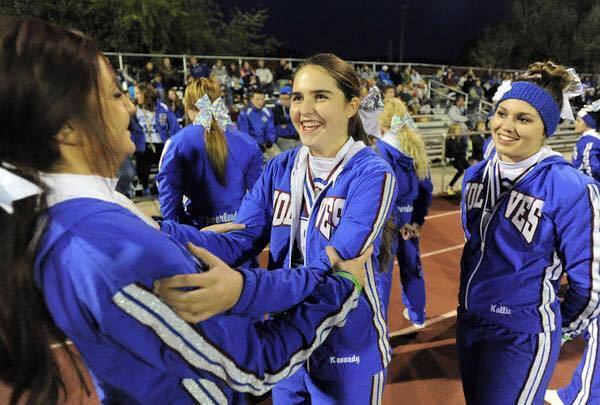
In addition to helping this woman find purpose in living, Kennedy also visited one of her friends after her death, bringing the gospel into her life. The day of Kennedy's death, Lexi Velasquez recalls:
"I came home crying, and I was crying forever. I felt pressure on my bed like someone was sitting next to me, and I felt my hand being grabbed. I was scared at first; I was really scared, [but] without real words coming out, I heard [Kennedy's voice] in my head that missionaries were coming, that we needed to listen to them, and that so many blessings would come. . . . I felt the pressure go off the bed and I felt my hand being released. I sat up in my bed. [Kennedy] wasn't facing me, but she was facing the other way and was just crying. She [said], 'Be strong, Alexis. You just have to be strong.' Then I closed my eyes and she was gone."
The next day, missionaries did arrive at Lexi's door, changing her life as well as the lives of her entire family.
Rudy
Most people know the story of Daniel Eugene "Rudy" Ruettiger from the classic Hollywood movie Rudy.
While the movie captures Ruettiger's tenacious battle to become a football player for Notre Dame's Fighting Irish, it shows little of his life after college, including his spiritual journey of becoming a member of The Church of Jesus Christ of Latter-day Saints.
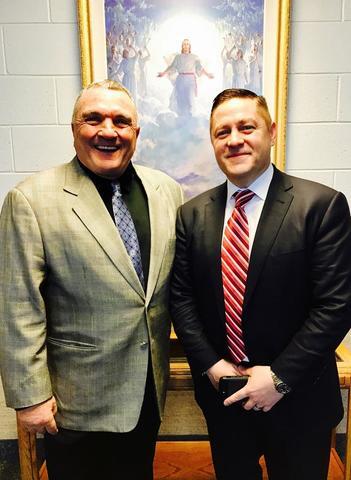
When Ruettiger first became exposed to the Church, he was doing something quite ordinary: preparing to watch a Notre Dame football game.
Several years ago, BYU Coach Bronco Mendenhall invited Ruettiger, now in his 60s, to attend a fireside the night before Ruettiger's Fighting Irish took on the BYU Cougars. Despite growing up attending Catholic schools and rooting for a Catholic college team, Ruettiger was impressed by the testimony of the football players from this Latter-day Saint school and he began asking questions, wanting to know more.
That initial curiosity soon grew within Ruettiger as he continued to investigate the Church, and on January 21, 2017, Rudy Ruettiger was baptized a member of The Church of Jesus Christ of Latter-day Saints.
With this new chapter in Ruettiger's life, the inspiring story of Rudy continues to show how one man went against all the odds to obtain his dreams.
As a young boy, Ruettiger battled dyslexia, something he didn't discover until attending Holy Cross College. It took four attempts before Ruettiger finally got accepted into Notre Dame, where he hoped to play on the football team.
But at 5'6" and 165 pounds, the possibility of Ruettiger becoming a Fighting Irish football player was minuscule. That never deterred Ruettiger, who worked many long, grueling hours to make it onto the Notre Dame scout team.
During his last chance to play at a home game, Ruettiger's coach, Dan Devine, had him dress and play in one of the last plays of the game as a defensive end. With just 27 seconds left on the clock, Ruettiger sacked Georgia Tech's quarterback in one of the most memorable underdog stories in football history. After the game, Ruettiger's teammates carried him off the field, making him one of the only players in Notre Dame history to be carried off the football field.
In honor of Ruettiger, the College Football Rudy Award is now awarded to football players who show character, courage, contribution, and commitment on the field.
Forrest Gump
While Latter-day Saints have become football legends, made history as wartime heroes, sailed oceans as captains, dominated ping-pong competitions, and even run hundreds of miles, there's no one Latter-day Saint, or one person for that manner, who has done it all.
But in the 1994 blockbuster Forrest Gump, which tells the story of a slow-witted man with a heart of gold and the childlike optimism, you might be surprised to see an image of the man known as "the real Forrest Gump." During the scene in the movie when Tom Hanks's character receives a Medal of Honor for his bravery in Vietnam, Hanks's head is superimposed over real footage of Latter-day Saint Sammy L. Davis (the man Forrest Gump is based on) receiving the Medal of Honor from President Lyndon B. Johnson.
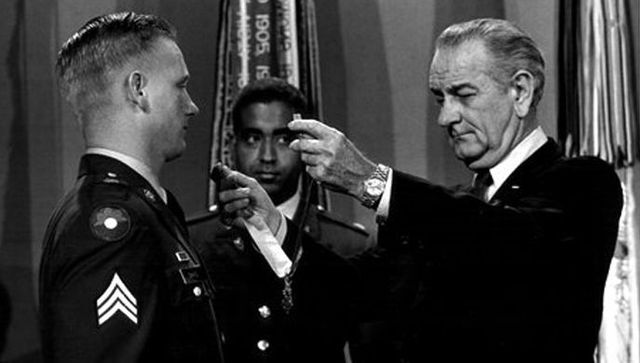
But Davis's service during the Vietnam War is astonishing enough to deserve a Hollywood film all its own. On November 18, 1967, shortly after his 21st birthday, Davis and his unit were helicoptered into a base near Cai Lay. Just after midnight, a heavy attack of mortars began raining down on Davis and his men as over a thousand Viet Cong soldiers launched a vicious ground assault to overrun the base.
Sgt. Davis immediately jumped on a machine gun, providing covering fire for his gun crew until the team took a direct hit from a recoilless rifle. The hit blasted Sgt. Davis from his gun into a foxhole, but he returned to his crew's howitzer, now ablaze and under constant gunfire, and fired a shell. The howitzer rolled back, sending Davis to the ground. Undeterred, Davis returned, loaded, and fired four more shells at the enemy despite getting injured by a mortar explosion.
When there were no more rounds or shells left to fire, Sgt. Davis heard GIs, cut off from the rest of the soldiers, yelling from the other side of a river near the base. Though he didn't know how to swim, Sgt. Davis grabbed an air mattress and paddled across the river. There, he found three wounded soldiers, one with a serious head wound that could quickly turn fatal. While another GI helped the man with the head wound, Davis provided covering fire. He then took the other two injured men across the river to safety before joining the fight once again.
Like Forrest Gump, Sgt. Davis was later wounded when friendly fire hit him in the back and buttocks. But unlike Forrest, Davis never showed the president the places where he was wounded. While recovering in the hospital, Davis learned he was going to be sent home due to his injuries, so he petitioned to be allowed to stay in Vietnam to do what he could. The petition was granted.
On November 19, 1968, Davis received the Medal of Honor for his bravery in putting the lives of others above his own.
Somewhere in Time
While a time-traveling Christopher Reeve might not be true to Latter-day Saint life, there is no doubt that Church members know about love that lasts through the ages. In fact, that's one of the gospel truths we most cherish.
But Latter-day Saint have more of a connection to the classic romance Somewhere in Time than just our knowledge of eternal families. In fact, Jane Seymour’s character, Elisa McKenna, is based on the real-life career of Latter-day Saint actress Maude Adams, the most popular actress of the American theater during the early 1900s and the richest performer of her time.
Maude Ewing Adams Kiskadden (November 1, 1872–July 17, 1953), known professionally as Maude Adams, began her career on the stage at just nine months old. Growing up near Liberty Park in Salt Lake City, Utah, Adams's family joined the Church after her great grandfather, the cousin and good friend of President John Quincy Adams, moved to Canada. It was there his eldest son met the Mormon missionaries.
Maude's greatest success stemmed from her role as Peter Pan, which she first played on Broadway in 1905. At her peak, her yearly income was one million dollars.
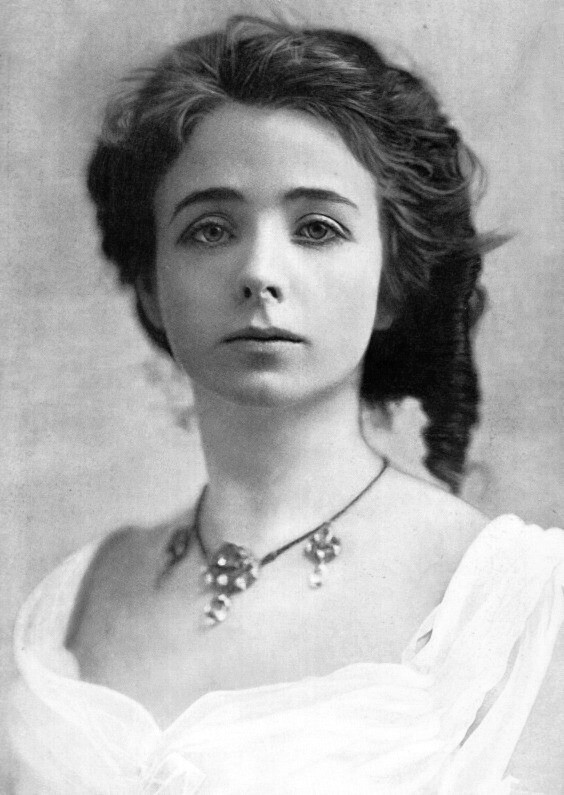
But Maude Adams was charitable with her wealth, often supplementing the salaries of other performers. "Her charities are many but quiet," Ada Patterson wrote in 1907. "To the friends of her early life in the West she is loyal and kind."
Captain Phillips
When pirates hijacked the merchant ship Maersk Alabama off the coast of Somalia in 2009, Latter-day Saint and Chief Engineer Mike Perry emerged as the true hero during the attack, according to The Guardian.
A 45-year veteran on the seas, Perry served in the Navy before becoming a Merchant Marine in 1995. When four Somali pirates boarded the Maersk Alabama and took Captain Richard Phillips and other crewmembers hostage, Perry risked his life subduing the chief pirate Abduwali Abdukhadir Muse, who was searching the ship for missing crew members. Perry fought and disarmed Muse in the dark engine room using nothing but a pocket knife, taking him hostage.
Having upset the balance of power, Perry then used Muse as a bargaining chip for the return of Phillips. But, when Phillips went down into the lifeboat to get it started, the pirates went back on the deal, taking Phillips with them.
While many of the facts in the Hollywood film Captain Phillips don't run true to the real story, it does portray Perry's heroic subduing of Muse.
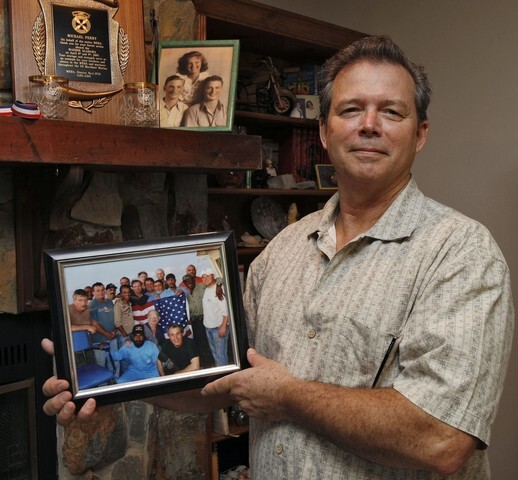
Perry told the press, “I didn't pattern myself after Chuck Norris or Jackie Chan,” referring to his actions on the ship. “The only thing that got me ready for this was the gospel of Jesus Christ.”
Rain Man
In 1984, screenwriter Barry Marrow met a man so inspiring, it led to the screenplay of a film that won four Academy Awards and two Golden Globes, not to mention being nominated for four other Academy Awards.
The film was Rain Man, and the inspiration behind it was Laurence Kim Peek.
At the age of 18 months, Peek could read both of the open pages in a storybook at the same time. Though he couldn't operate a light switch or button his shirt on his own, Peek could retain 98 percent of the information of anything he read, recalling the names of roads, historical facts, dates, composers, and nearly every single word in thousands of books, including Latter-day Saint scriptures. "He had a bottomless memory," Daniel Christensen, clinical professor of psychiatry at the University of Utah's Neuropsychiatric Institute, told NPR. And that memory earned him the nickname "Kim-puter."
Unlike most savants, Peek did not have autism. Instead, he suffered from a rare birth defect known as agenesis of the corpus callosum, meaning the two hemispheres of his brain lacked connections.

Peek was a close friend of President Thomas S. Monson, and the two often talked together until Peek died of a heart attack in 2009. Peek graduated from seminary 20 times and shared his gospel knowledge with thousands as he traveled the world demonstrating his abilities and inspiring others. "He's been a missionary his whole life," Peek's father, Fran, said of his son.
The Saratov Approach
On March 18, 1998, Latter-day Saint missionaries Travis Robert Tuttle (from Gilbert, Arizona) and Andrew Lee Propst (from Lebanon, Oregon) were doing their normal mission rounds and knocked on the door of a man who had asked some questions regarding the Church.
That's when the two elders were bludgeoned with a metal baton, handcuffed, tied up, and left with tape covering their eyes and mouth.
"I had no hope of ever walking out of there alive," Propst told the Deseret News. The missionaries' abductors kept them in a small room for five harrowing days, not telling them about the $300,000 ransom note they had delivered to Church officials in Russia or the work the Church and U.S. government were undertaking to save the two young elders.
"I remember thinking, 'I need to get out of here or I will not live to see tomorrow,'" Tuttle told the Deseret News. Over the five days, the missionaries endured psychological and physical abuse, Tuttle even experiencing nerve damage from wearing tight handcuffs.
Every day the missionaries prayed fervently to God, and they continued to talk with and try to befriend their captors. One night, a captor arrived at the apartment drunk, saying he planned to release the missionaries as he forced them in the back seat of a car and drove for 45 minutes.
"There wasn't a word spoken that entire time. We thought we were being taken to our final resting place," Propst told the Deseret News. But then they were forced out of the car into the snow and left behind. The first thing the missionaries did after hugging was to say a prayer of gratitude.
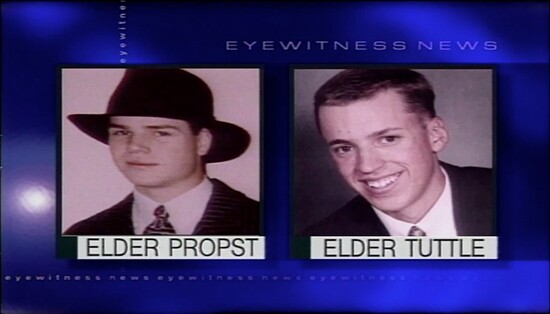
Now, Propst and Tuttle are both married with children of their own who plan to serve missions for the Church. And their real life experience, captured in The Saratov Approach, has inspired thousands both inside and outside the Church.
"Every missionary gets a chance to change lives, we just got to do it on a bigger scale," Tuttle told the Deseret News. "I took a beating for a greater cause."
"I wouldn't change anything," Propst adds. "It sounds kind of crazy, but I think being kidnapped was one of the best experiences of my life … to learn those life lessons that most 19-year-olds don't get a chance to."
The Last Descent
During Thanksgiving break in 2009, Latter-day Saint father and husband John Edward Jones descended into the Nutty Putty Cave with his brothers and friends never to return.
A medical student with a wife and 2-year-old daughter, Jones was exploring the cave when he suddenly found himself stuck in an almost unreachable crevice 150 feet underground, hanging upside down.
Over the next 28 hours, rescuers worked frantically to free Jones, finding a way to give him an IV and letting him talk to his wife over a police radio, but ultimately they could not rescue Jones before he suffocated.
It may be surprising to many that Jones' family has decided to share these final, tragic moments of his life with the world through the movie The Last Descent, but his wife, Emily, says she decided to share his story to show people the kind of man he was as well as to share the message that there is hope of seeing those we love again.
"I think when people come away from this movie they will have a greater desire to love people, to love their family, to love better, to be kinder, to be a better person, and to cherish every minute they have with their loved ones," Emily says. "This in not the end of life. Life goes on. Family goes on. Relationships go on after this life."
As John Jones's dad, Leon, notes, this story is not one of death, but of eternal life and of eternal families.
"There is incredible hope out there for us. As families, we know that we will be happy and that we will be together as a family again, with John."
The Cokeville Miracle
Wielding a homemade bomb and guns, David and Doris Young entered an elementary school in Cokeville, Wyoming, on May 16, 1986, holding the 154 students and teachers hostage.
David Young soon began delivering a manifesto to his hostages detailing the start to his revolution of creating a "brave new world" and his desired ransom of $2 million per child.
As the hours passed, groups of students and teachers, many of whom were Latter-day Saints, gathered to pray. In the afternoon, Doris Young accidentally jerked a string attached to the bomb's detonator, setting off a massive explosion.
► You may also like: The astonishing true stories behind the Cokeville Miracle Movie
“There were flames all over the room and children screaming—just pandemonium,” Carol Petersen, a second-grade teacher at the time, told LDS Living.
“I saw bodies all over the lawn, and I didn’t know if they were dead or alive,” recalls Lori Nate Conger, a fifth-grader at the time.
But miraculously, all of the teachers and students made it out of the school alive.
Ron Hartley, the lead investigator for the Lincoln County Sheriff’s Office, had four children in the bombing. “I met the bomb tech right there at the door, and he said, ‘Hartley, what you have here is a miracle. That bomb should have leveled the wing of this school, but it looks like the bomb blast went straight up. I don’t know why—I can’t explain it.’”
Later, investigators learned that three of the bomb's five blasting caps had been mysteriously cut, no one was hit by flying shrapnel that pocked the school walls, and many children reported seeing angels and their deceased ancestors the day of the explosion, shielding them from harm. (To read more about these miracles, click here.)
In fact, the horrors and wonders of that day eventually led to the conversion of a 10-year-old victim who suffered 3rd-degree burns during the bombing. These incredible events inspired to the creation of The Cokeville Miracle, which testifies of the angels, miracles, and strengthened faith many of the bombing survivors experienced that day.
Brigham Young
Vincent Price as Joseph Smith, Mary Astor as a prophet's wife, and a host of other Hollywood icons portraying Church figures fill the credits for the 1940 film Brigham Young.
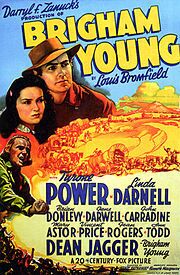
Among them is Dean Jagger, an Academy-Award winner best known for his role as General Major Tom Waverly in White Christmas. When Jagger played the prophet Brigham Young in the 1940 film of the same name, little did he know his interaction with the Church was far from over.
► You may also like: 7 Latter-day Saints with Stars on the Hollywood Walk of Fame
Later in his life, Jagger married Latter-day Saint Etta Mae Norton and later became a member of the Church himself.
The film Brigham Young depicts the troubled times in the Church following the martyrdom of Joseph Smith as the new prophet leads the Saints out West to settle in Salt Lake City. Interestingly enough, Twentieth Century Fox consulted with Church historians and President Heber J. Grant during the making of the film.
The Other Side of Heaven
In 2001, Walt Disney Studios captured the story of Latter-day Saint missionary John Groberg, a young man from Idaho who suddenly found himself serving on a remote Tongan island half a world away. Starring Anne Hathaway and Christopher Gorham, the movie details the miracles as well as the spiritual journey Elder Groberg undertook.
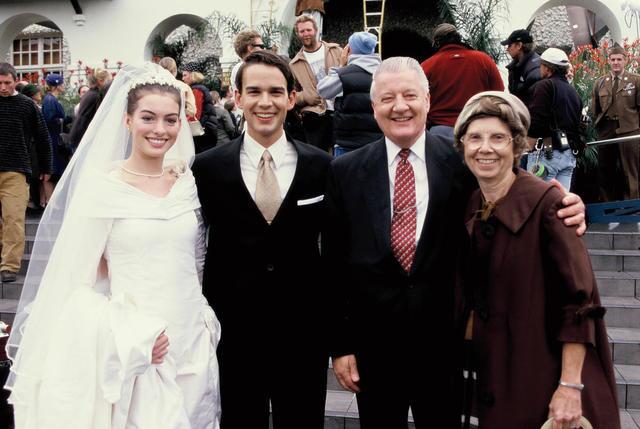
Talking about his experience as a missionary in general conference in 2004, Elder Groberg, then of the Presidency of the Seventy, said:
“As a young missionary I was assigned to a small island of about 700 inhabitants in a remote area of the South Pacific. To me the heat was oppressive, the mosquitoes were terrible, the mud was everywhere, the language was impossible, and the food was—well, ‘different.’
“After a few months our island was struck by a powerful hurricane. The devastation was massive. Crops were ruined, lives were lost, housing was blown away, and the telegraph station—our only link to the outside world—was destroyed. A small government boat normally came every month or two, so we rationed our food to last four or five weeks, hoping the boat would come. But no boat came. Every day we became weaker. There were acts of great kindness, but as the sixth and seventh weeks passed with very little food, our strength slipped noticeably. My native companion, Feki, helped me in every way he could, but as the eighth week commenced, I had no energy. I just sat under the shade of a tree and prayed and read scriptures and spent hours and hours pondering the things of eternity.
“The ninth week began with little outward change. However, there was a great inward change. . . .
“I was pretty much skin and bones by now. I remember watching, with deep reverence, my heart beating, my lungs breathing, and thinking what a marvelous body God has created to house our equally marvelous spirit! The thought of a permanent union of these two elements, made possible through the Savior’s love, atoning sacrifice, and Resurrection, was so inspiring and satisfying that any physical discomfort faded into oblivion.
“When we understand who God is, who we are, how He loves us, and what His plan is for us, fear evaporates. . . . I learned that just as rockets must overcome the pull of gravity to roar into space, so we must overcome the pull of the world to soar into the eternal realms of understanding and love. I realized my mortal life might end there, but there was no panic. I knew life would continue, and whether here or there didn’t really matter. What did matter was how much love I had in my heart. I knew I needed more! I knew that our joy now and forever is inextricably tied to our capacity to love.
“As these thoughts filled and lifted my soul, I gradually became aware of some excited voices. My companion Feki’s eyes were dancing as he said, 'Kolipoki, a boat has arrived, and it is full of food. We are saved! Aren’t you excited?' I wasn’t sure, but since the boat had come, that must be God’s answer, so yes, I was happy. Feki gave me some food and said, 'Here, eat.' I hesitated. I looked at the food. I looked at Feki. I looked into the sky and closed my eyes.
“I felt something very deep. I was grateful my life here would go on as before; still, there was a wistful feeling—a subtle sense of postponement, as when darkness closes the brilliant colors of a perfect sunset and you realize you must wait for another evening to again enjoy such beauty.
“I wasn’t sure I wanted to open my eyes, but when I did I realized that God’s love had changed everything. The heat, the mud, the mosquitoes, the people, the language, the food were no longer challenges. Those who had tried to harm me were no longer my enemies. Everyone was my brother or sister. Being filled with God’s love is the most joyous of all things and is worth every cost.”
Freetown
Caught in the middle of a brutal civil war, Liberian missionaries undertook a dangerous cross-country journey that led them deep into rebel territory as they faced potential capture and execution in order to continue serving their missions, events that inspired the movie Freetown.
Driving over 200-miles with eight missionaries crammed into the car of one Church member, the men were stopped at nearly 50 checkpoints by rebels searching for members of the Krahn Tribe. Still wearing their missionary attire, the missionaries prayed for their safety—one elder in particular. Elder John Gaye, a Krahn and convert to the Church, ignored the advice of his relatives to join the military or flee, choosing instead to finish his mission.
► You'll may also like: The harrowing story of a convert missionary trapped in civil war
"Later I would learn that my relatives thought I was dead—nobody expected a Krahn to survive in a rebel-held area," Gaye says.
"Every day was a miracle to me," he continues. "I didn't know what to expect. Being a man of faith as I am, this was difficult for me. My constant prayer was to be able to safely get out of the area. When it looks like there's no way out of a dangerous situation, the Lord always makes a way inasmuch as we put our trust in Him. I knew I was in danger, but I strongly felt the Lord would rescue me somehow."
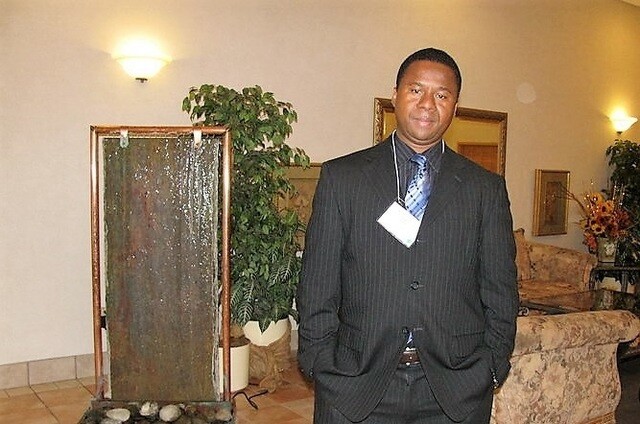
Looking back, Gaye realizes, "If I wasn't a missionary at the time when the civil war erupted in Liberia, I would not be alive."
The elders eventually arrived in Freetown, Sierra Leone, where the baptism rate increased dramatically and the number of branches in the area quickly doubled after their arrival.
“All that was seriously needed to open the branches was more priesthood,” recalls Walter Stewart, a senior missionary from the United States who was also living in the Freetown mission home. They “brought a powerful spirit of faith and devotion to this part of the mission, certainly bred out of the agonizing they have suffered in their beloved homeland. They are first to recognize the hand of the Lord in this modern miraculous exodus."
17 Miracles
Growing up, members of the Church frequently hear about the suffering and sacrifice of the Willie Handcart Company. But what about the miracles these Latter-day Saints experienced?
Though nearly 250 of the 900 pioneers who set out with the Martin and Willie Handcart Companies died along the trail due to starvation, bitter cold, and exhaustion, many miracles went into the rescuing of these Latter-day Saints. In fact, a rescue team found the Willie Handcart Company in the middle of a blizzard the day after the pioneers had run out of food.
Director T.C. Christensen explores these incredible stories in his film17 Miracles, which depicts a daughter left for dead in a shallow grave being brought back to life, a mysterious man approaching the ravaged pioneers and revealing a cave with a stash of dried meat, and many other miracles based on true pioneer testimonies.
Ephraim's Rescue
Baptized in 1845, Ephraim Knowlton Hanks was among the first rescuers to meet the Martin and Willie Handcart Companies in 1856.
One night that same year, Ephraim heard a voice call his name when he was preparing to go to bed. Three times the voice came to Ephraim, telling him the Saints stuck on the plains were in trouble and asking him to help them.
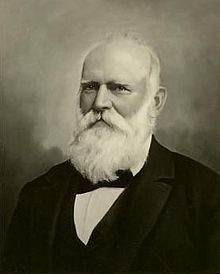
Three times Ephraim responded with the same answer: he would go and save the Saints if he were called. Just two days later, Brigham Young stood up in general conference, calling for volunteers to help the desperate Willie and Handcart Companies.
The very next day, Ephraim set out on his journey. While facing the same snow storms that had ravaged the Saints, Ephraim was forced to abandon his wagon and continue on horseback.
During this time, Ephraim described the many miracles he experienced while relieving the Saints:
"As I was preparing to make a bed in the snow with the few articles that my pack animal carried for me, I thought how comfortable a buffalo robe would be on such an occasion, and also how I could relish a little buffalo meat for supper, and before lying down for the night I was instinctively led to ask the Lord to send me a buffalo.
"Now, I am a firm believer in the efficacy of prayer, for I have on many different occasions asked the Lord for blessings, which He in His mercy has bestowed on me. But when I after praying as I did on that lonely night in the South Pass, looked around me and spied a buffalo bull within fifty yards of my camp, my surprise was complete," Ephraim wrote in his journal.
The next morning, Ephraim found yet more buffalo, and the meat proved not only a blessing to the Saints when he reached them on the trail, it also fulfilled prophecy.
"A prophecy had been made by one of the brethren that the company should feast on buffalo meat when their provisions might run short; my arrival in their camp, loaded with meat, was the beginning of the fulfillment of that prediction," he writes.
About that first night he met the handcart companies, Ephraim says the sight "can never be erased from my memory. The starved forms and haggard countenances of the poor sufferers, as they moved about slowly, shivering with cold, to prepare their scanty evening meal was enough to touch the stoutest heart."
That night, Ephraim was given the charge of helping to lay out a man who a leader in the camp said had died just moments before.
"I immediately stepped back to the camp fire where several of the brethren were sitting and addressing myself to Elders Grant, Kimball and one or two others, I said, 'Will you boys do just as I tell you?' The answer was in the affirmative. We then went to work and built a fire near the tent which I and Elder Tyler had just visited. Next we warmed some water, and washed the dying man whose name was Blair, from head to foot. I then anointed him with consecrated oil over his whole body, after which we laid hands on him and commanded him in the name of Jesus Christ to breath and live. The effect was instantaneous. For the man who was dead to all appearances immediately began to breathe, sat up in his bed and commenced to sing a hymn."
Ephraim's inspiring faith and sacrifice to help those in need inspired Latter-day Saint director T.C. Christensen to turn his life and these events into a film titled Ephraim's Rescue.

